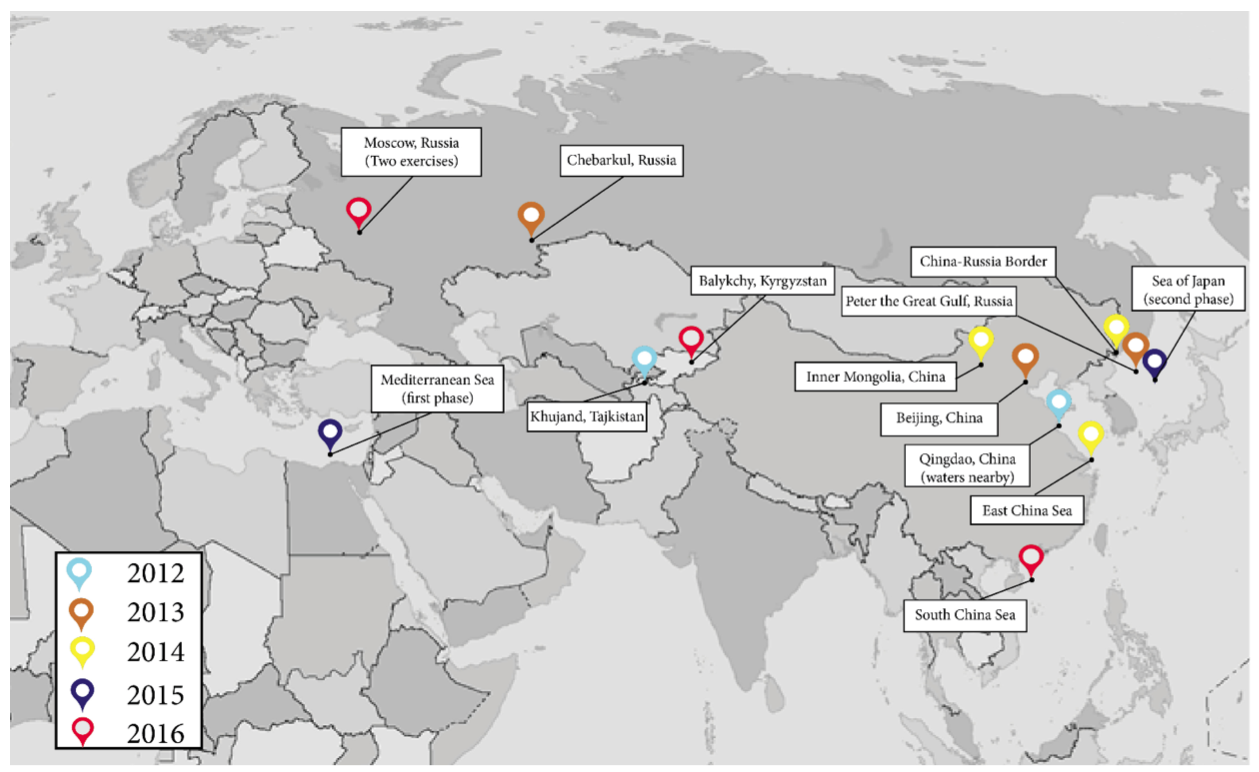 Electronic attack J-16
Electronic attack J-16A dedicated electronic warfare (EW) version of the Shenyang J-16 fighter completed its maiden flight on December 18 last year. The first images of the aircraft — sometimes described as the J-16D or even J-16G — reveal several changes compared to the standard J-16 fighter-bomber: most obviously, two large EW pods on the wingtips that are very similar in appearance to the AN/ALQ-218 tactical jamming receivers used by the Boeing EA-18G Growler. The aircraft also features a new, shorter radome and the standard 30mm cannon and the optical sensor in front of the starboard side of the windshield have been removed. In addition, several conformal dielectric EW arrays can be seen around the fuselage, front section (behind the radome), and intakes. Photo
In the wake of Russia’s demonstrations of advanced electromagnetic spectrum and communications jamming capabilities, most recently displayed in their incursion into Ukraine, China also is upping its game in this space, demonstrating similar capabilities in the Pacific.The U.S. Department of Defense, in an annual report to Congress on China’s military and security developments, assessed that the country is placing greater importance upon EW, on par with traditional domains of warfare such as air, ground and maritime.
“The [People’s Liberation Army] sees EW as an important force multiplier, and would likely employ it in support of all combat arms and services during a conflict,” the 2016 report asserts. “The PLA’s EW units have conducted jamming and anti-jamming operations, testing the military’s understanding of EW weapons, equipment, and performance. This helped improve the military’s confidence in conducting force-on-force, real-equipment confrontation operations in simulated EW environments.”
According to the report, China’s EW weapons include “jamming equipment against multiple communication and radar systems and GPS satellite systems. EW systems are also being deployed with other sea- and air-based platforms intended for both offensive and defensive operations.”More here.
 Before Russia and China began their recent series of bilateral exercises, the key tie between Moscow and Beijing was arms sales and military technology cooperation — totaling about $26 billion from 1992 to 2006 — according to estimates cited in the report.
Before Russia and China began their recent series of bilateral exercises, the key tie between Moscow and Beijing was arms sales and military technology cooperation — totaling about $26 billion from 1992 to 2006 — according to estimates cited in the report.
Moscow sold Beijing, “export versions of the Su-27 and Su-30 fighter, the S-300 SAM defense system, Sovermennyy-class guided missile destroyer, and Kilo-class diesel-electric submarine,” the report said, citing data from the Stockholm International Peace Research Institute.
Fears of China copying Russian systems led to a drop off in arms sales between the two countries – especially higher end weapon systems. Chinese arms manufactures are notorious for taking, modifying and reproducing weapon designs. More here.
Russia and China are planning to merge their satellite tracking systems, RT.com is reporting.
The giant system will be able to cover most of an area including China, Kazakhstan, Kyrgyzstan, Russia, Tajikistan, Uzbekistan, India and Pakistan. according to RT, the Russian-funded news outlet.
The two nations will reportedly negotiate terms of the merger in May during a conference in China.
Russia and China will be able to share data on positions of navigation satellite groups and to improve efficiency in a real-time environment, RT reported.
The merger was initiated by Chinese officials.
“If the project is implemented, it will allow for an improvement in accuracy for both systems,” a spokesman for the Russian Federal Space Agency, Roscosmos was quoted.
Japan and India are getting set for their own regional navigation satellite systems, RT reported. The system is expected to be operational by the end of the year.
